The increasing demand for compact and efficient city cars has led to a fierce rivalry between the Hyundai i10 and Kia Picanto. Both models share a similar heritage, modern styling, and practicality, but they also feature distinct technical aspects and innovations that cater to different consumer preferences. In this article, we will compare these two popular hatchbacks across various specifications to help you determine which car might be best for you.
Hyundai i10 vs Kia Picanto – Differences & prices compared
Compare performance, boot capacity, efficiency and price at a glance.
Find out which car is the better choice for you – Hyundai i10 or Kia Picanto?
Exterior Design and Dimensions
When it comes to exterior aesthetics, both the Hyundai i10 and Kia Picanto exhibit a modern and eye-catching design. The i10 measures 3670 mm in length and 1680 mm in width, boasting a more substantial road presence compared to the Picanto, which is slightly smaller at 3605 mm in length and 1595 mm in width. However, the Picanto tends to offer a slightly taller profile at 1485 mm compared to the i10's height of 1480 mm.
These dimensions contribute to each car's maneuverability, particularly in urban environments, where parking and navigating tight spaces are daily challenges. Both models feature a hatchback body type, providing ease of access and practicality.
Powertrains and Performance
Under the hood, both vehicles come with petrol engines, with the Hyundai i10 offering up to 90 HP and the Kia Picanto providing a maximum of 79 HP. The i10's power options cater to various drivers, with available engine capacities of 998 cm3 and 1197 cm3, delivering either 63 HP or 79 HP, while the Picanto offers a comparable range. In terms of torque, the i10 outshines its competitor with a maximum of 172 Nm compared to the Picanto’s peak of 115 Nm.
Acceleration is another critical aspect where the i10 holds a competitive edge; it offers a swift 0-100 km/h time of 11.4 seconds for its most powerful variant, while the Picanto trails slightly with a peak time of 13.1 seconds. However, everyday driving experience largely depends on real-world conditions, and both cars demonstrate adequate performance for city commutes.
Fuel Efficiency and Emissions
Fuel efficiency is paramount in this segment, and both the Hyundai i10 and Kia Picanto deliver commendable figures. The i10's consumption ranges between 4.9 to 5.4 L/100 km depending on the variant, making it a touch more efficient than the Picanto, which consumes between 5.2 to 5.6 L/100 km. Additionally, CO2 emissions for the i10 span from 111 to 123 g/km, while the Picanto’s range sits slightly higher at 118 to 130 g/km.
With both cars meeting European emissions standards, they present positive environmental profiles for city dwellers focused on sustainability.
Interior Comfort and Capacity
When entering the cabin, you'll find that both models are designed with comfort and functionality in mind. The Hyundai i10 accommodates up to five passengers, similar to the Kia Picanto, which also offers a five-seat configuration. The trunk capacity in the i10 is rated at 252 L, while the Picanto provides a slightly larger trunk space of 255 L, catering to those who require a bit more storage for daily errands.
Both interiors are equipped with modern technology, including infotainment systems that provide connectivity features, though the specific offerings may vary. Interior fit and finish also lean towards a consumer’s personal preference.
Innovations and Technologies
Hyundai has incorporated various safety and assistance features into the i10, including advanced driver assistance systems that enhance the peace of mind while driving. On the other hand, Kia has focused on integrating a user-friendly infotainment system with smartphone connectivity options in the Picanto.
Both models are equipped with their unique array of innovations geared towards improving comfort and safety. Hyundai emphasizes a more robust technical package, while Kia puts stress on practicality and ease of use.
Conclusion: Which Should You Choose?
Ultimately, the choice between the Hyundai i10 and Kia Picanto hinges on your individual preferences. If you value a more powerful engine, slightly better acceleration, and enhanced tech features, the i10 might be your best bet. Conversely, if you prefer slightly better trunk space and an economical option for city driving, the Picanto would serve you well.
Both cars are excellent choices for urban commuters seeking efficiency, style, and function, but carefully weighing their specifications and strengths can lead you to an informed decision that best fits your lifestyle.
Here’s where it gets real: The technical differences in detail
Costs and Efficiency:
Price and efficiency are key factors when choosing a car – and this is often where the real differences emerge.
Hyundai i10 has a minimal advantage in terms of price – it starts at 14600 £, while the Kia Picanto costs 15300 £. That’s a price difference of around 738 £.
Fuel consumption also shows a difference: Hyundai i10 manages with 4.90 L and is therefore to a small extent more efficient than the Kia Picanto with 5.60 L. The difference is about 0.70 L per 100 km.
Engine and Performance:
Power, torque and acceleration say a lot about how a car feels on the road. This is where you see which model delivers more driving dynamics.
When it comes to engine power, the Hyundai i10 has a clearly perceptible edge – offering 90 HP compared to 68 HP. That’s roughly 22 HP more horsepower.
In acceleration from 0 to 100 km/h, the Hyundai i10 is distinct quicker – completing the sprint in 11.40 s, while the Kia Picanto takes 14.60 s. That’s about 3.20 s faster.
In terms of top speed, the Hyundai i10 performs barely noticeable better – reaching 175 km/h, while the Kia Picanto tops out at 162 km/h. The difference is around 13 km/h.
There’s also a difference in torque: Hyundai i10 pulls significantly stronger with 172 Nm compared to 96 Nm. That’s about 76 Nm difference.
Space and Everyday Use:
Whether family car or daily driver – which one offers more room, flexibility and comfort?
Both vehicles offer seating for 5 people.
In curb weight, Hyundai i10 is to a small extent lighter – 996 kg compared to 1124 kg. The difference is around 128 kg.
In terms of boot space, the Kia Picanto offers minimal more room – 255 L compared to 252 L. That’s a difference of about 3 L.
In maximum load capacity, the Hyundai i10 performs hardly perceptible better – up to 1050 L, which is about 40 L more than the Kia Picanto.
When it comes to payload, Hyundai i10 noticeable takes the win – 423 kg compared to 332 kg. That’s a difference of about 91 kg.
Who wins the race?
The Hyundai i10 proves to be is largely superior and therefore becomes our DriveDuel Champion!
Hyundai i10 is the better all-rounder in this comparison.
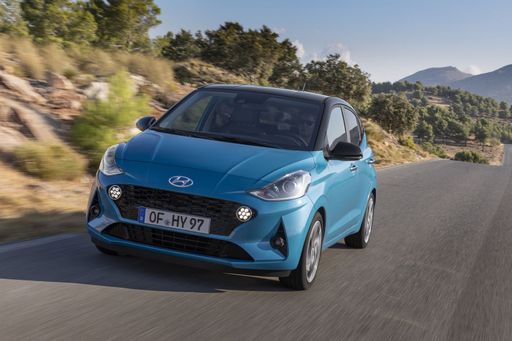 @ Hyundai Motor Company
@ Hyundai Motor Company
Hyundai i10
Hyundai i10
The Hyundai i10 is a cheeky city car that squeezes big-car confidence into a pocket-friendly package, carving through tight streets with surprising composure and sensible practicality. For buyers after low fuss, sensible equipment and wallet-friendly running costs, it's a smart, no-nonsense pick that makes sense whether you're a first-time driver or need a reliable second car.
details @ Hyundai Motor Company
@ Hyundai Motor Company
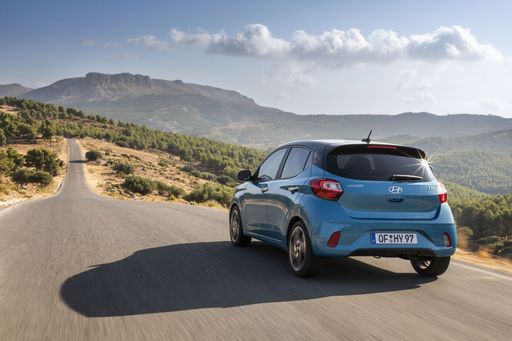 @ Hyundai Motor Company
@ Hyundai Motor Company
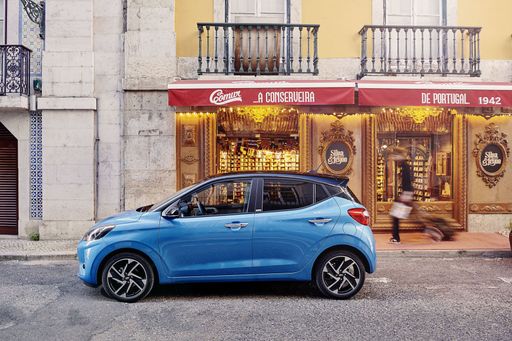 @ Hyundai Motor Company
@ Hyundai Motor Company
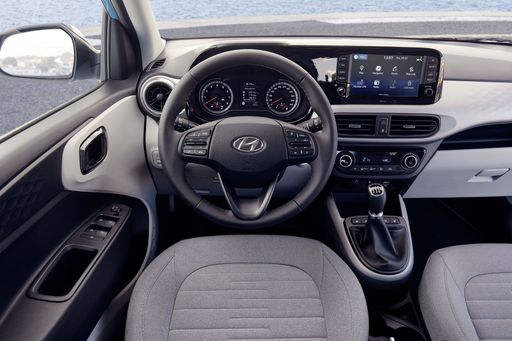 @ Hyundai Motor Company
@ Hyundai Motor Company
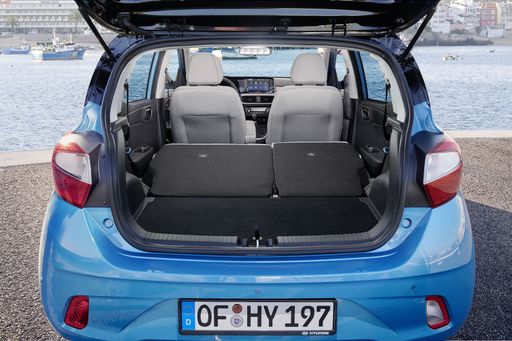 @ Hyundai Motor Company
@ Hyundai Motor Company
Kia Picanto
Kia Picanto is a cheeky city hatch that squeezes surprising style, practicality and a smile-inducing drive into a pocket-friendly package. It’s ideal for urban buyers who want fuss-free running, effortless parking and a car that punches above its class without pretending to be anything it’s not.
details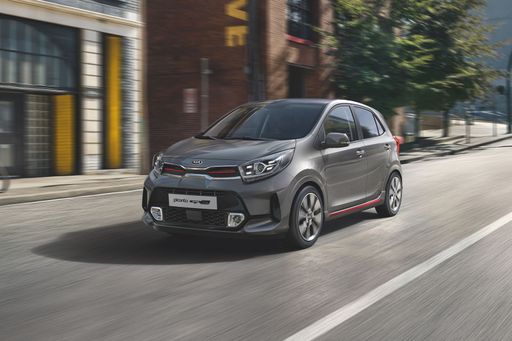 @ Kia Corporation
@ Kia Corporation
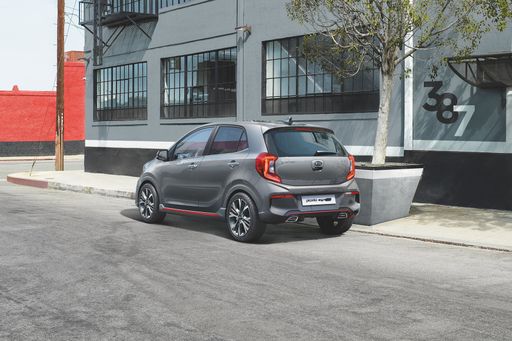 @ Kia Corporation
@ Kia Corporation
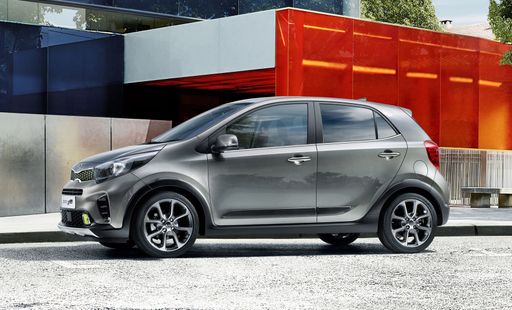 @ Kia Corporation
@ Kia Corporation
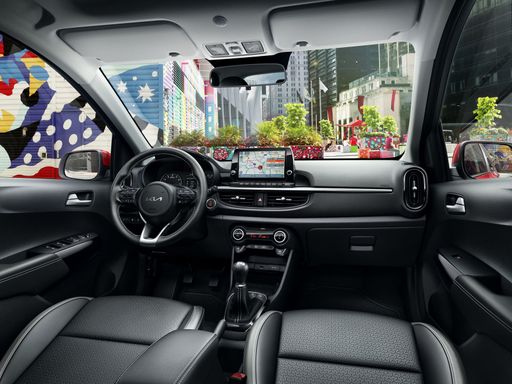 @ Kia Corporation
@ Kia Corporation
 @ Hyundai Motor Company
@ Hyundai Motor Company
|
 @ Kia Corporation
@ Kia Corporation
|
|
|
|
Costs and Consumption |
|
|---|---|
|
Price
14600 - 19000 £
|
Price
15300 - 19300 £
|
|
Consumption L/100km
4.9 - 5.5 L
|
Consumption L/100km
5.6 - 5.9 L
|
|
Consumption kWh/100km
-
|
Consumption kWh/100km
-
|
|
Electric Range
-
|
Electric Range
-
|
|
Battery Capacity
-
|
Battery Capacity
-
|
|
co2
110 - 124 g/km
|
co2
127 - 135 g/km
|
|
Fuel tank capacity
36 L
|
Fuel tank capacity
35 L
|
Dimensions and Body |
|
|---|---|
|
Body Type
Hatchback
|
Body Type
Hatchback
|
|
Seats
4 - 5
|
Seats
4 - 5
|
|
Doors
5
|
Doors
5
|
|
Curb weight
996 - 1099 kg
|
Curb weight
1124 - 1131 kg
|
|
Trunk capacity
252 L
|
Trunk capacity
255 L
|
|
Length
3670 - 3675 mm
|
Length
3605 mm
|
|
Width
1680 mm
|
Width
1595 mm
|
|
Height
1480 - 1483 mm
|
Height
1485 mm
|
|
Max trunk capacity
1050 L
|
Max trunk capacity
1010 L
|
|
Payload
344 - 423 kg
|
Payload
253 - 332 kg
|
Engine and Performance |
|
|---|---|
|
Engine Type
Petrol
|
Engine Type
Petrol
|
|
Transmission
Manuel, Automatic
|
Transmission
Manuel, Automatic
|
|
Transmission Detail
Manual Gearbox, Automated Manual
|
Transmission Detail
Manual Gearbox, Automated Manual
|
|
Drive Type
Front-Wheel Drive
|
Drive Type
Front-Wheel Drive
|
|
Power HP
63 - 90 HP
|
Power HP
68 HP
|
|
Acceleration 0-100km/h
11.4 - 18.4 s
|
Acceleration 0-100km/h
14.6 - 17.2 s
|
|
Max Speed
143 - 175 km/h
|
Max Speed
160 - 162 km/h
|
|
Torque
93 - 172 Nm
|
Torque
96 Nm
|
|
Number of Cylinders
3 - 4
|
Number of Cylinders
3
|
|
Power kW
46 - 66 kW
|
Power kW
50 kW
|
|
Engine capacity
998 - 1197 cm3
|
Engine capacity
998 cm3
|
General |
|
|---|---|
|
Model Year
2024
|
Model Year
2025
|
|
CO2 Efficiency Class
C, D
|
CO2 Efficiency Class
D
|
|
Brand
Hyundai
|
Brand
Kia
|
Is the Hyundai i10 offered with different drivetrains?
The Hyundai i10 is offered with Front-Wheel Drive.
The prices and data displayed are estimates based on German list prices and may vary by country. This information is not legally binding.
